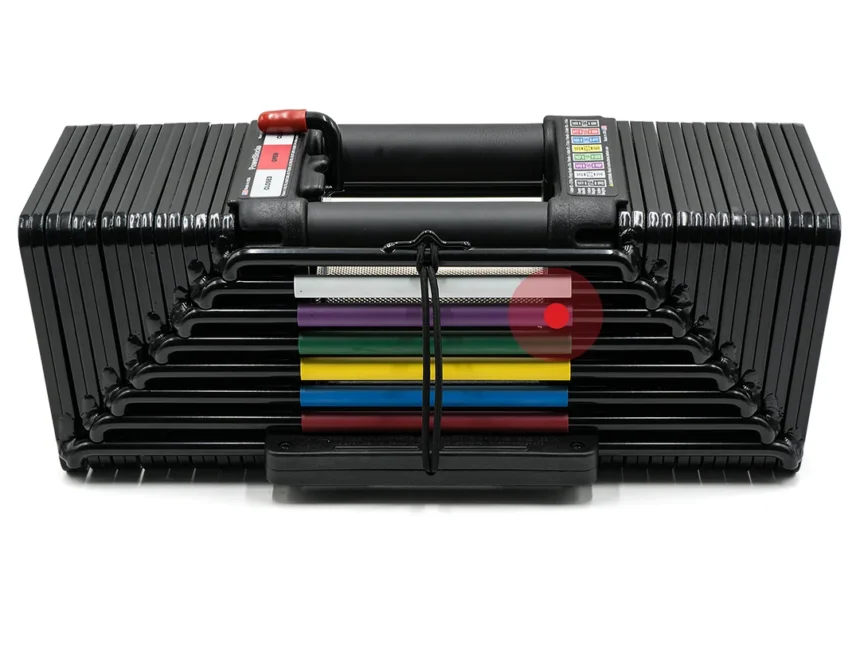A typical strength- or muscle-building exercise occurs in units. You elevate the load a sure variety of occasions (“reps”), then you definitely put it down for a fast relaxation earlier than going once more. However how lengthy ought to that relaxation be? The reply will rely on a couple of elements, together with the aim of the exercise.
There are respectable causes for powerlifters to attend 5 minutes between units of squats, or for calisthenics devotees to set a 30-second timer earlier than leaping again up for one more set of pullups. There’s additionally a superb argument that, for many people, relaxation occasions don’t matter that a lot.
Why relaxation occasions matter
The longer you relaxation between units, the extra recovered you may really feel. However the shorter your rests, the extra work you can do in a given health club session.
Selecting probably the most acceptable relaxation time for every train will get you the most effective positive aspects within the health club. However the optimum relaxation time will rely on what sort of train you are doing and what your objectives are. So let’s go over some execs and cons of lengthy and quick relaxation occasions.
POWERBLOCK Elite EXP Adjustable Dumbbell (2020 Mannequin)
When to make use of lengthy relaxation occasions
Longer rests (say, three minutes or extra) are greatest for power exercises the place the objective is to enhance each your power and your talent at lifting heavy weights. In spite of everything, you want follow at lifting heavy if you need to have the ability to elevate heavy. After you place a heavy barbell down, you may want a number of minutes in your physique to be able to do one other large elevate.
Within the three to 5 minutes you may relaxation between units of (say) barbell squats, the ATP in your muscle tissues regenerates. You get some blood circulation to deliver oxygen and vitamins into your muscle cells, and flush away metabolic byproducts. Resting for a number of minutes offers you the most effective probability of coming again to the subsequent set at full power.
The longer you relaxation—inside cause—the extra totally recovered you’ll be for the subsequent set. In case you solely enable your self one minute, you’ll nonetheless be fatigued once you decide up the load once more. However when you wait longer, you’ll be capable of deal with extra weight.
The downsides of lengthy relaxation occasions
The principle drawback of lengthy relaxation occasions is time administration. Your exercises shall be longer when you relaxation 5 minutes between workouts as an alternative of 1 or two. You may additionally end up getting distracted between units. You scroll social media for a bit, and by some means it has been eight minutes because you final touched a weight. Setting a relaxation timer can assist with this.
Some individuals get antsy throughout lengthy rests, and can cross the time by doing pushups or leaping jacks. That form of defeats the aim of lengthy rests. Save the supersets in your accent work afterwards, not the principle elevate the place you are attempting to go heavy.
How lengthy is a “lengthy” relaxation time?
For an train the place you are utilizing giant muscle teams (like a squat or deadlift), 5 minutes is typical when you’re as much as your working weights for the day. Warmup units do not want as a lot time.
For workouts the place you are engaged on power but it surely’s a lighter elevate or makes use of smaller muscle tissues (like overhead press), three minutes is often loads.
When to make use of quick relaxation occasions
With regards to muscle progress, additionally referred to as hypertrophy, shorter rests could make extra sense. To be clear, power and muscle progress are associated, however not the identical factor. In case you aren’t interested by lifting the heaviest weight attainable, simply in making your muscle tissues greater or your physique extra “toned,” you’ll wish to take note of the most effective relaxation occasions for hypertrophy. These shall be shorter than for pure power.
Historically, trainers say that 90 seconds or much less is an efficient rule of thumb. (The Nationwide Academy of Sports activities Drugs recommends 0 to 60 seconds; the private coaching textbooks from the Nationwide Energy and Conditioning Affiliation and the American Council on Train each suggest 30 to 90 seconds.)
However analysis has proven that quick relaxation durations could not really be higher for muscle progress than longer ones. A 2016 examine discovered that three-minute relaxation durations really yielded extra muscle progress than one-minute rests. The authors suppose it’s because the boys of their three-minute group (yep, the examine was solely completed on males) had been in a position to make use of heavier weights than the boys within the one-minute group. Because the variety of units was the identical in each teams, this implies the three-minute group lifted extra weight.
A newer meta-analysis (not but totally peer reviewed and revealed) additionally comes down on the facet of longer rests. In accordance with the research they included within the evaluation, the authors discovered that 30 to 60 seconds is probably going too quick. Resting one to 2 minutes between units is greatest for muscle progress, they are saying. Greater than two minutes would not actually assist.
The downsides of quick relaxation occasions
The shorter your rests, the lighter weights you may work with. That is tremendous when you’re attempting to make do with mild dumbbells, but it surely means you are not getting follow with heavier weights. Most of us wish to be jacked and robust, so quick relaxation occasions imply you are biasing your self to the muscle dimension facet of the equation.
Very quick relaxation occasions (lower than a minute) might also intervene along with your capacity to make the most important positive aspects, because the research above famous. You could possibly make up for this by doing extra units of the train. In case you benefit from the go-go-go feeling of quick rests, that could be completely tremendous with you. Add an additional set or two and you recognize you are utilizing your time nicely. For the remainder of us, although, slowing down and taking a full minute between units shall be higher than speeding it.
How lengthy is a “quick” relaxation time?
One to 2 minutes is probably going the candy spot, in accordance with current research. That is on the upper finish of the really useful 30 to 90 seconds. It is tremendous to do a few of your rests shorter and a few longer, however if you would like me to let you know what to punch in in your timer, go along with 90 seconds.
Tips on how to get the advantages of each lengthy and quick relaxation occasions
Finally, chances are you’ll be greatest off utilizing a mixture of lengthy and quick relaxation occasions, which is how quite a lot of applications are designed. Use longer relaxation occasions for a couple of large compound lifts at the start of the exercise (like squats or bench press) and shorter relaxation occasions for circuits, equipment, or isolation workouts afterward (like curls or glute bridges).
Supersets are an effective way to separate the distinction. In case you work totally different muscle teams in two totally different workouts, you are able to do one train whereas the opposite muscle tissues relaxation. This is not your only option when you actually need all of your vitality and focus to go towards one elevate (like when you’re working as much as a PR in your bench press) but it surely’s an effective way to do hypertrophy work. For instance, do this:
- Do a set of pullups
- Relaxation 30 seconds
- Do a set of pushups
- Relaxation 30 secondsIn this instance, if it takes you 30 seconds to do the set of pushups, you’ve got rested 90 whole seconds in between your first set of pullups and your second set of pullups.
How lengthy to relaxation between units of particular workouts
Okay, however what if you wish to get stronger and develop muscle? What if you wish to cease overthinking the specifics and do no matter relaxation interval makes you appear like a traditional particular person on the health club who is aware of what they’re doing? Right here’s a cheat sheet:
- For pushups and pullups: In case you do a small to medium variety of reps (lower than 12), deal with them as a power train and wait three to 5 minutes between units. In case you’re a kind of individuals banging out 20 or 50 at a time, you most likely wish to take rests of a couple of minute in order that fatigue could make your subsequent set a bit shorter and you may end your exercise on this lifetime.
- For barbell squats and deadlifts: These are compound lifts that use many muscle tissues in your physique. They’re just about all the time completed (comparatively) heavy, and it’s helpful to construct power in these strikes. Deal with them as a power train and wait three to 5 minutes.
- For bench press, overhead press, chest press, and shoulder press: These contain smaller muscle tissues and fewer weight than squats and deadlifts, however they nonetheless qualify as compound, strength-focused workouts. Two to a few minutes shall be sufficient, more often than not, however take as much as 5 on heavy units if you want to.
- For rows and lat pulldowns: Identical because the presses, for a similar causes. Two to a few minutes could also be sufficient, however as much as 5 would nonetheless be affordable.
- For isolation workouts: when you’re attempting to really feel the burn or the pump, quick rests will actually make it easier to right here. Take 30 seconds between units.
These are simply tips, so be at liberty to experiment. If you wish to work in your cardiovascular conditioning, take rather less relaxation between units. In case you’ve already completed an enormous set of bench presses right this moment, do the remainder of your arm and chest equipment with shorter relaxation durations.
La Crosse Expertise WT-8002U Digital Wall Clock
All of your questions on relaxation occasions, answered
Let’s do a lightning spherical, since I do know relaxation occasions are a enormous topic of dialogue amongst people who find themselves getting the hold of the health club routine. However first, a plea so that you can not overthink this: when you merely relaxation till you’re feeling able to go once more, you may most likely do okay.
Is three minutes relaxation between units an excessive amount of?
No. In case you’re attempting to maneuver a heavy weight, you most likely wish to relaxation a minimal of three minutes. In case you’re coaching for muscle dimension (and do not care as a lot about power), you possibly can shorten your rests a bit. Nonetheless, it isn’t dangerous to relaxation too lengthy, simply barely inefficient.
Are you able to relaxation an hour between units?
At that time I would not name it a relaxation time, only a totally different exercise. Once you come again to the health club after that hour, you may have to heat up once more. I might say if it has been greater than 10 or quarter-hour between units, or when you really feel such as you’re bodily cooling down, it is price doing a little form of train simply to maintain your physique prepared. This might be pushups when you’re ready for a bench to liberate, for instance.
How lengthy ought to I relaxation if I am new to the health club?
As a noob, you are most likely not lifting very heavy (but). Meaning you do not have rather a lot to relaxation from. Say you are doing squats: your physique continues to be studying tips on how to squat in any respect. You are not taking 300 kilos for a experience and needing to relaxation a number of minutes to recuperate.
For that cause, newer individuals could not have to relaxation as a lot. Two minutes between squat units? Positive, that is tremendous when you really feel prepared. The pitfall right here is that when you get used to taking quick rests, you possibly can find yourself working with weights which are too mild for you. After your first few weeks on the health club, be certain that to do a few of your heavier lifts with longer relaxation occasions (not less than three minutes) and see when you really feel brisker.








